#Carrozzeria Ghia
Text




Fiat 8V Supersonic Coupé, 1953, by Ghia. Styled by Giovanni Savonuzzi who had been recently appointed head of design at Carrozzeria Ghia, only eight examples of the 8V Supersonic Coupe were made.
#Fiat#Fiat 8V#Fiat 8V Supersonic Coupé#1953#Ghia#Carrozzeria Ghia#coachbuilt#design study#Giovanni Savonuzzi#1950s#Supersonic Coupé#V8
465 notes
·
View notes
Text

De Tomaso Monttella concept car, 1975.
179 notes
·
View notes
Photo




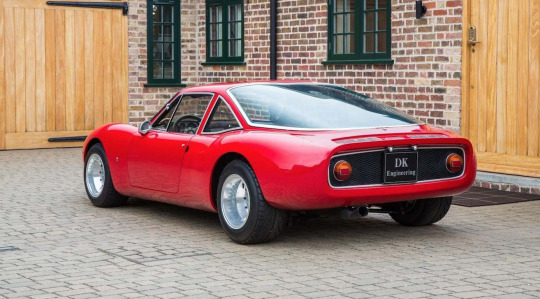



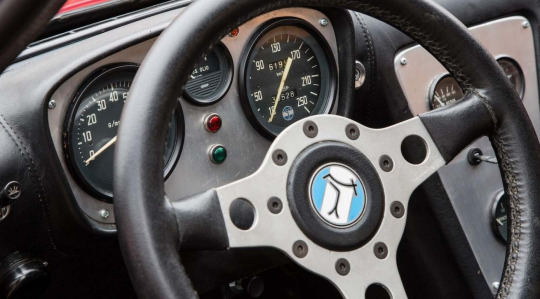
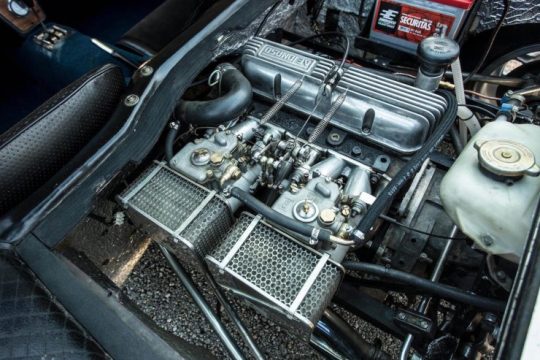
De Tomaso Vallelunga (1 of 54).
Only 54 examples of the De Tomaso Vallelunga were ever made, they were the first of the road cars built by De Tomaso but not the first cars – the Italian company had previously built cars for Formula Junior, Formula 3, Formula 2, and Formula 1. The plan for the Vallelunga was never for De Tomaso to build it themselves. It was developed by Alessandro and his team in the hopes of selling the design to a larger manufacturer, and was shown as a concept car at the Turin Motor Show in 1963.There were no takers, but Alessandro had fallen in love with the design, so he worked out a deal to have the Vallelunga built by Carrozzeria Ghia in Turin – and production began the next year in 1964. The structural design of the Vallelunga wasn’t entirely dissimilar to cars from Lotus, it utilized a steel backbone chassis, a lightweight fiberglass body, and a 1.6 liter straight-4 Ford Kent engine. Unusually, the Vallelunga used its rear-mid mounted engine as a stressed member, helping to increase rigidity of the rear sub-frame.Suspension is independent front and rear, with double wishbones and coil springs, there are front and rear anti-roll bars, and disc brakes on all four corners. This suspension arrangement coupled with the low 726 kilogram (1600 lb) kerb weight makes the Vallelunga is an excellent handling car even by modern standards.Although a Ford 4-cylinder might not sound particularly exotic, the Kent engine was different. It was named for the English county of Kent, which was just across the river from Ford’s Dagenham plant where it was designed.The engine first appeared in 1959 and would stay in production in some guise until 2002 – an astonishing run when you consider the engineering advances that happened over the same time period. Iterations of the Ford Kent engine would be fitted to everything from the TVR Grantura, and De Tomaso Vallelunga, to the Ford Anglia and Marcos 1500 GT.
139 notes
·
View notes
Photo





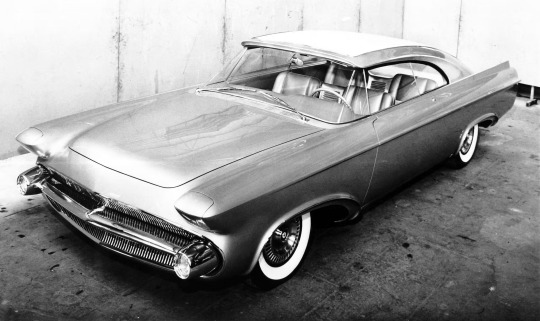
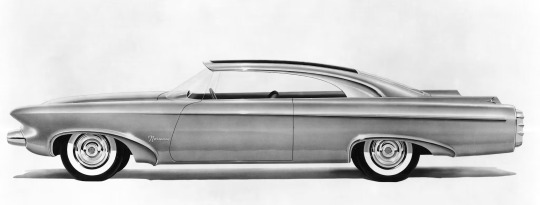
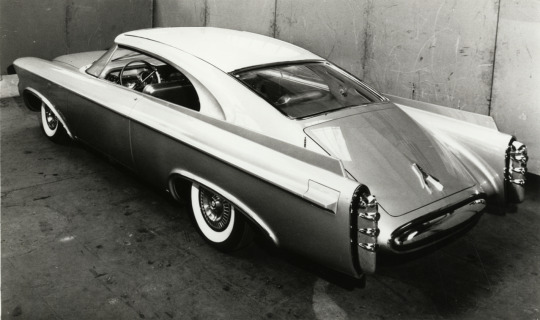
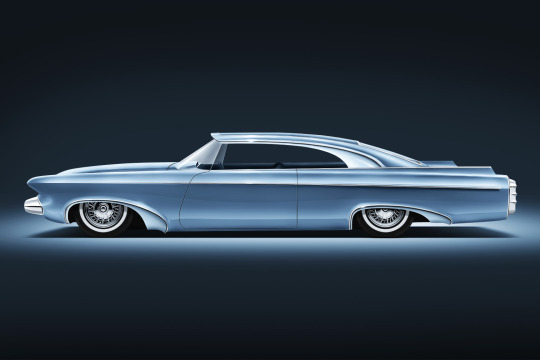

The 1956 Chrysler Norseman was a concept car designed by Chrysler stylists and built overseas in Italy by Carrozzeria Ghia, a coachbuilding (carbody building) firm who famously did the styling for the Volkswagen Karmann Ghia models. Intended for the 1957 circuit, the car was completed in 1956 and sent from Italy to America on the Italian ocean liner Andrea Doria in July.
The car was a four-seat fastback coupe with hidden headlights and a cantilevered roof supported only at its rear-end, allowing for an all-glass front windshield with no metal supports. The car was state-of-the-art, and it’s unknown how many of its daring concepts would have made it into production models, as the car never entered production. On the evening of July 25, amid heavy fog, the Andrea Doria collided with the Swedish ocean liner Stockholm fifty miles south of Nantucket Island, and sank late the next morning. Forty-six people were killed in the initial collision when the Stockholm’s bow pierced the Andrea Doria’s side, but as the ship stayed afloat for eleven hours after the collision and many ships arrived to take on survivors, the remaining 1,660 passengers and crew were evacuated safely, in what became known as one of the greatest rescue operations of the 20th century. With photographers and television crews in airplanes on hand to watch the final moments, the Andrea Doria slipped beneath the waves at 11:00 AM. The Chrysler Norseman, located deep in the Andrea Doria’s garage, was lost as well, and never recovered.
Although it’s tempting to mourn the loss of such a gorgeous and daring car, I think that the daring concept elements which give the car some of its charm would have been toned down in production. A similar car from 1956, the Mercury XM-Turnpike Cruiser, was a radical car in its concept, with radical styling and glass roof panels above the doors that opened vertically like gullwing doors to allow for easier entrance and exit from the car’s low roof. These elements were toned down in production, with the glass panels replaced by a plain hardbody roof and the styling simplified on the carbody. Doubtless the same would have happened the the Chrysler Norseman had it entered production.
36 notes
·
View notes
Text


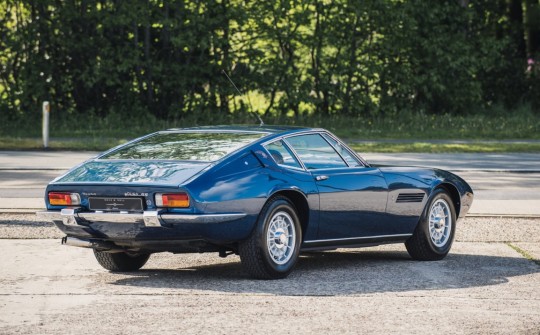

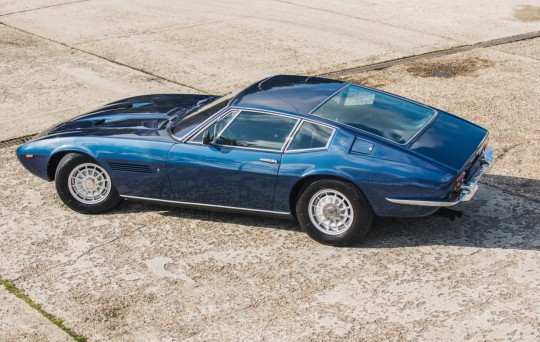
1970 Maserati Ghibli V8 4.9, design Carrozzeria Ghia.
780 notes
·
View notes
Text

Chrysler Ghia GS-1
The Chrysler Ghia GS-1 was designed by Virgil Exner at Chrysler and built by Carrozzeria Ghia in Turin during the mid-1950s.
55 notes
·
View notes
Text

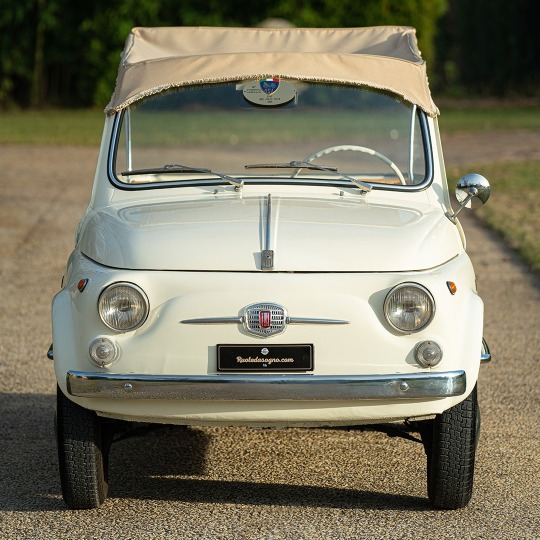

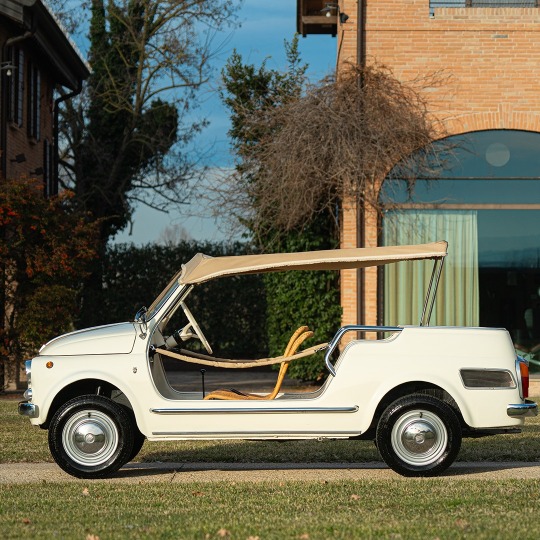
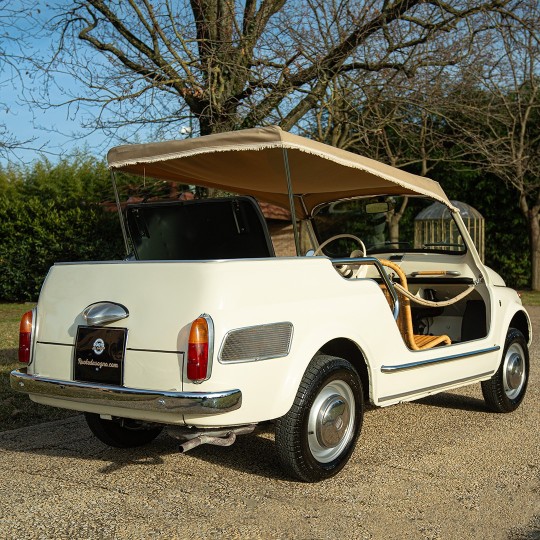
Fiat 500 Giardiniera “Jolly” carrozzeria Ghia - 1965. - source Ruote da Sogno.
48 notes
·
View notes
Text

Plymouth XNR Concept, 1960. Designed by Virgil M. Exner and built by Carrozzeria Ghia 3

6 notes
·
View notes
Text
Swiss chapter: 1956 Fiat 1100 TV Coupé by Ghia-Aigle
We don’t know how many of these specimens were produced, but we believe, with good reason, that there are very few of them, very few.
Ghia-Aigle originally operated as a subsidiary of Carrozzeria Ghia, becoming independent in 1953 and temporarily located in Lugano (1954–58). Designers were mainly from Ghia, including Mario Boano (1948–51), Giovanni Michelotti (1948–57), and Pietro Frua…

View On WordPress
12 notes
·
View notes
Text

The Chrysler Ghia GS-1 was designed by Virgil Exner at Chrysler and built by Carrozzeria Ghia in Turin during the mid-1950s. After negotiations with Pinin Farina to produce a prototype body failed, Chrysler awarded the contract to Ghia in 1951 to build the new transatlantic coupes. A run of approximately twelve GS-1s are thought to have been built over a two-year period; however, only six cars are known to exist today.
2 notes
·
View notes
Link
0 notes
Text



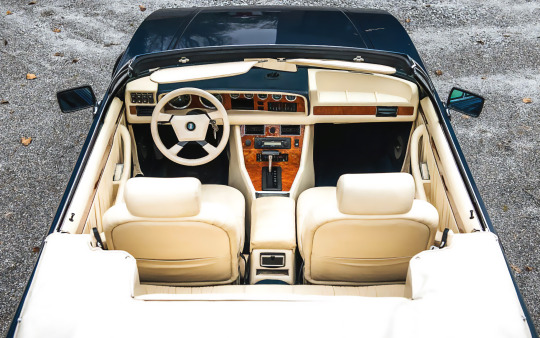
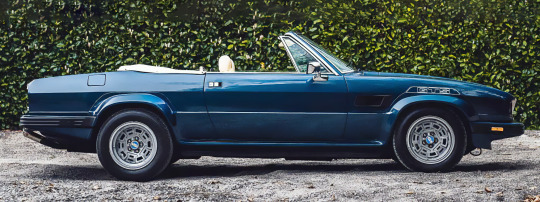
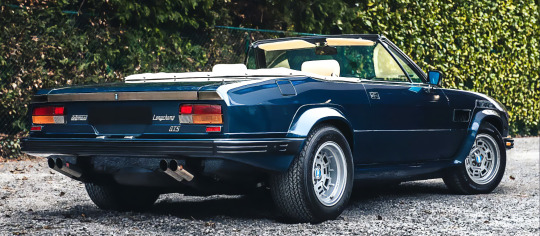
De Tomaso Longchamp Spider, 1983, by Carrozzeria Pavesi. The Longchamp Coupé was designed by Tom Tjaarda at Ghia and went on sale in 1972 so it took 11 years for the convertible version to be offered. They were built by Pavesi for De Tomaso and only 14 were made before production of the Longchamp ended in 1988.
photographs from carrozzieri-italiani.com
#De Tomaso Longchamp Spider#De Tomaso Longchamp#De Tomaso#coachbuilt#Carrozzeria Pavesi#Pavesi#open roof#convertible#Ford V8#1983#1980s#Tom Tjaarda#Ghia
240 notes
·
View notes
Text
Classic Elegance of the 1960 Renault Floride (R1092) with Hard-Top
Rediscovering the Quintessential Classic
The Renault Caravelle emerged as a sports car produced and marketed by Renault during its single-generation run from 1958 to 1968. This sleek, open two/four-seater was conceptualized by Pietro Frua of Carrozzeria Ghia and utilized the floorpan and engine derived from the Renault Dauphine.
Internationally, except in North America and Britain, it was…

View On WordPress
0 notes
Photo
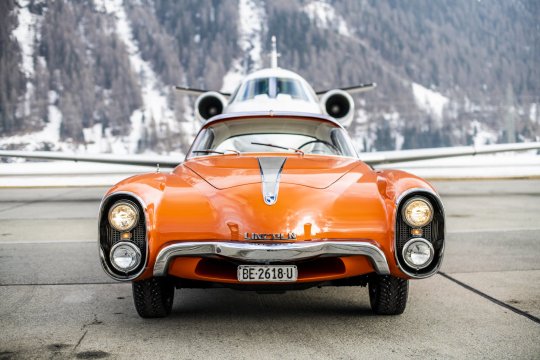


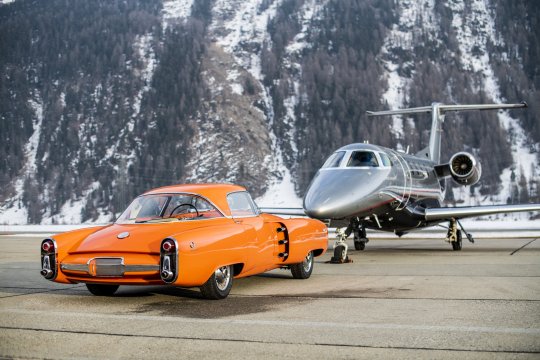



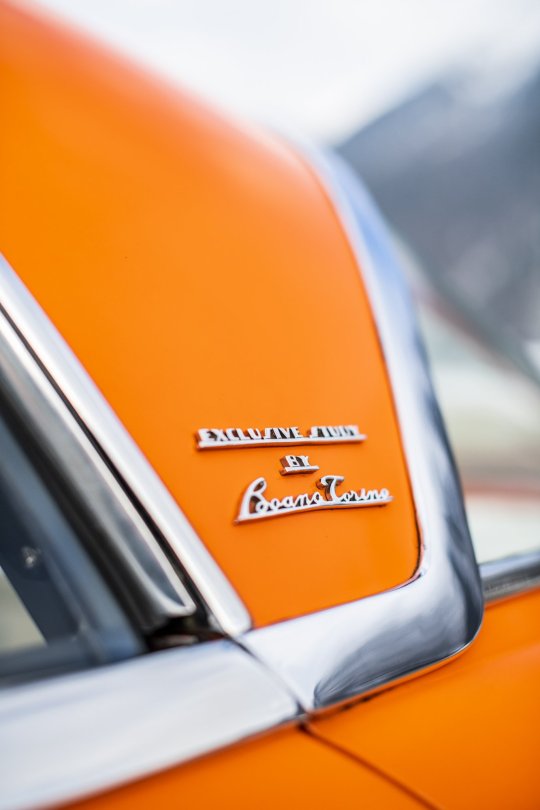

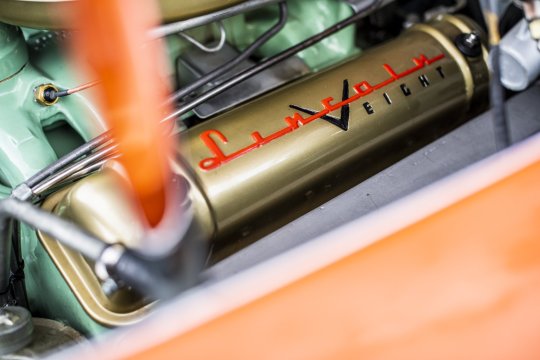
Lincoln Indianapolis (one-off).
With its sextet of faux, side-mounted exhaust pipes, proboscis-like front end and aircraft-style wraparound screens, the one-off design study looks eye-poppingly futuristic even today – so imagine how extreme it must have seemed when the wraps were first pulled off it at the Turin International Automobile Show in 1955.As is often the case with such ‘concepts’ the design was created in double-quick time, flowing from the pen of Gian Paolo Boano, the talented 20-something son of the celebrated coachbuilder and former Ghia boss Felice Mario Boano. Boano senior only founded Carrozzeria Boano in 1954, but Gian Paolo had an ex-Ford friend who suggested that, if the Boanos could create a dramatic and futuristic design based on FoMoCo underpinnings, it might serve as a starting point for establishing a potentially lucrative arrangement between the fledgling firm and the giant manufacturer.
Gian Paolo was thus handed a Lincoln chassis – Lincoln being Ford’s luxury marque – and set to work creating large-scale sketches that he and the carrozzeria’s skilled craftsman brought to life using a combination of steel tubing and sheet metal. The hugely exaggerated hood was flanked by suitably long wheel arches (or ‘fenders’ in U.S. speak) that each held twin stacked headlamps and culminated in shrouds from which those fake exhaust tips ostentatiously protruded.
The feature was balanced by forward-facing air vents set into door-mounted cowlings that flowed seamlessly into the rear wings which, in turn, book-ended a sloping tail that made the roof seem even more ‘canopy’ like to reinforce the design’s aviation influences.
The 2+2-seater ‘cockpit’ was trimmed, chequered flag-style in black and white and featured a wraparound dashboard and bucket seats separated by a prominent, stepped centre console. And, just to make sure Boano’s futuristic creation didn’t go un-noticed, its already dramatic bodywork was finished in a coat of flaming orange paint.
With Carrozzeria Boano being based just a few miles west of Turin, it was an easy job to get the freshly-finished, freshly-named ‘Indianapolis Exclusive Study’ to the 37th Salone dell'Automobile, where it wowed the crowds and provided visiting motoring journalists with ready copy. Auto Age magazine even made it the cover star of its November issue, teasing its readers with the tantalising caption: “Is this the next Lincoln?”
137 notes
·
View notes
Text
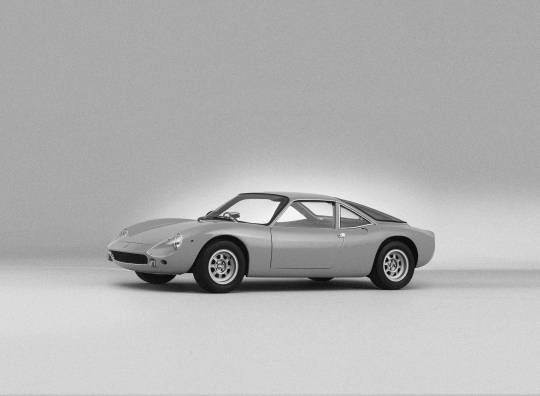




The De Tomaso Vallelunga was the first production car made by De Tomaso. Alejandro De Tomaso needed to find a coach-builder and decided to use Carrozzeria Ghia, a company he would later purchase outright.
152 notes
·
View notes
Text
Ferrari 410 SuperAmerica Scaglietti Boano 1957 - Elle a succédé à la 375 America

La seule Ferrari 410 Superamerica à l'origine carrossée par Scaglietti
Le moteur de la Ferrari 410 SuperAmerica - présenté sur le châssis de la 375 America au Salon de l’automobile de Paris en octobre 1955. Quant à la voiture, elle n’a été dévoilée au public que lors du Salon de l’automobile de Bruxelles de 1956. Sa carrosserie élégante aux dimensions impressionnantes était l’oeuvre de Pinin Farina. Étonnamment, ce modèle était_destiné à une production en série. Il a également_été décliné en diverses versions de compétition. Signant ainsi le retour d’une ancienne pratique de Ferrari.

Ferrari 410 Scaglietti Boano SuperAmerica 1957
La Ferrari 410 SuperAmerica, a succédé à la 375 America. Présentée au public sous la forme d’un châssis nu au Salon de l’automobile de Paris en 1955! puis sous sa forme complète au Salon de Bruxelles début 1956. Trois séries très limitées ont_été produites entre 1956 et 1959.
Visuellement, le véhicule présenté à Bruxelles en 1956 était très similaire au nouveau design de la 250 GT coupé de Pinin Farina! qui a ensuite donné naissance à la 250 GT Boano et Ellena. La plupart des exemplaires des séries I et II ont repris ce style de carrosserie! mais quelques-uns arboraient une carrosserie unique radicalement différente. Puisque la 410 Superamerica était un modèle extrêmement coûteux réservé à une clientèle fortunée! même les coupés « standard » présentaient tous des caractéristiques différentes pour satisfaire des exigences spécifiques des clients.
Carrosserie de la Ferrari 410 SuperAmerica
Les carrosseries uniques conçues pour les véhicules des séries I et II figuraient parmi les plus surprenantes jamais aperçues sur un châssis Ferrari. Pinin Farina a produit deux prototypes de Superfast radicalement différents. Le premier a été_présenté au Salon de l’automobile de Paris en 1956 sur un châssis n° 0483SA. Avec un toit en porte-à-faux sans montants de pare-brise avant (ajoutés plus tard, avant la commercialisation). Mais aussi des ailettes dynamiques intégrant de feux triangulaires sur les arêtes arrière du capot.

Ferrari 410 Scaglietti Boano SuperAmerica 1957
Il adoptait une finition blanche et bleu métallique pâle, les deux couleurs étant séparées par une bande chromée faisant le tour de la voiture à partir de chaque côté de la grande grille de calandre ovale. La deuxième Superfast, construite sur un châssis n° 0719SA, a été présentée au Salon de l’automobile de Turin en 1957. La partie avant et l’habitacle étaient similaires, mais l’arrière affichait une ligne assagie et plus élégante. Ce qui s’accordait mieux avec l’avant du véhicule.
Le principal fabricant des carrosseries de compétition Ferrari de l’époque, Scaglietti, a également habillé un exemplaire doté d’un châssis 0671SA. Celui-ci présentait également des ailettes. (adaptées au goût américain, puisque l’essentiel de ces véhicules était_destiné à ce marché). Mais aussi des panneaux de toit, de seuil et d’ailette en acier brut. Ceux-ci contrastaient avec le rouge foncé de la carrosserie.
Carrozzeria Boano
Le Carrozzeria Boano a livré son interprétation des ailettes. Un coupé monté sur un châssis 0477SA présentant une lunette arrière en deux parties. Mais aussi un cabriolet doté de la même carrosserie sur un châssis 0485SA! ces deux modèles présentant des ailettes incurvées. C’est cependant Ghia qui a proposé les ailettes les plus imposantes et les plus longues! avec son interprétation sur châssis 0473SA, inspirée des voitures de rêve « Gilda » et « Dart » qu’il avait conçues pour Chrysler.

Ferrari 410 Scaglietti Boano SuperAmerica 1957
Châssis et moteur
La série I présentait généralement un châssis d’un empattement de 2 800 mm! bien qu’il y ait eu des exceptions, et la série II! produite en 1956 et 1957, un châssis d’un empattement de 2 600 mm. Quant à la série III! elle_fut présentée fin 1958 au Salon de l’automobile de Paris - sur un châssis d’un empattement de 2 600 mm! avec une nouvelle version de la carrosserie signée Pinin Farina.
Les châssis des véhicules de la série III (référence 514/A), présentant un empattement de 2 600 mm! suivaient également la séquence de numérotation impaire des routières avec le suffixe SA! et leurs composants mécaniques étaient identiques à ceux des séries précédentes. Le style de carrosserie conçu par Pinin Farina était commun à tous les véhicules de la série! excepté le prototype présenté au salon, qui comptait cinq fenêtres (tous les exemplaires suivants en comptaient trois).
Il existe toutefois encore des distinctions, la principale concernant les phares! qui sont non carénés sur certains véhicules et encastrés dans les ailes avant sous des caches en Perspex sur d’autres.
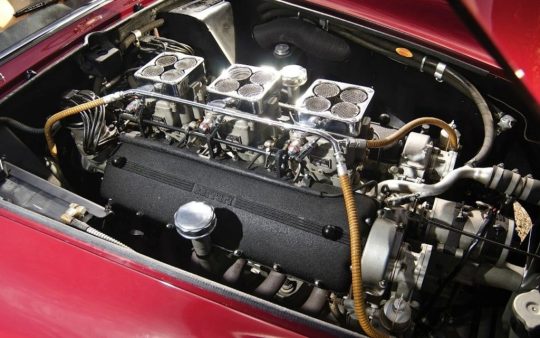
Ferrari 410 Scaglietti Boano SuperAmerica 1957
Motorisation
Le moteur de la série III - doté de nouvelles culasses avec les bougies à l’extérieur du V. Alors que jusqu’à présent les bougies_étaient placées à l’intérieur du V sur tous les V12 Ferrari. Cette caractéristique a ensuite été_reprise sur le moteur 3 litres de la 250 GT. Il s’agissait de la dernière version du « long block » de Lampredi avec des chemises vissées dans la culasse. Par la suite, des chemises coulissantes plus classiques avec joint de culasse fut_utilisées sur les moteurs de toutes les cylindrées. Fait inhabituel, ce moteur utilisait des bielles usinées à partir d’une billette d’acier massif ! ce qui était_normalement réservé à certains moteurs de compétition Ferrari, plutôt que des bielles en acier forgé.
Découvrez tous les autres modèles Ferrari
Équipe de trois carburateurs double corps Weber 46 DCF3 et d’un distributeur à deux bobines pour développer 360 bhp. Par ailleurs couplé à une boîte de vitesses 4 rapports à dispositif de synchronisation! avec une disposition des vitesses différente de celle des modèles Superamerica précédents. La disposition de la transmission et les rapports de pont en option - identiques à ceux des modèles précédents de la série. Site officiel Ferrari
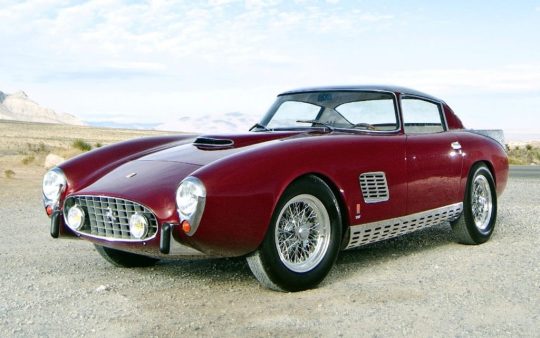
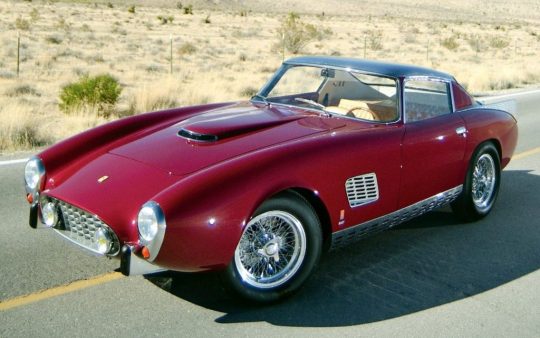


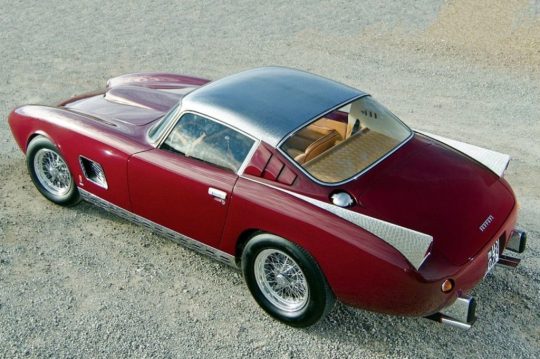


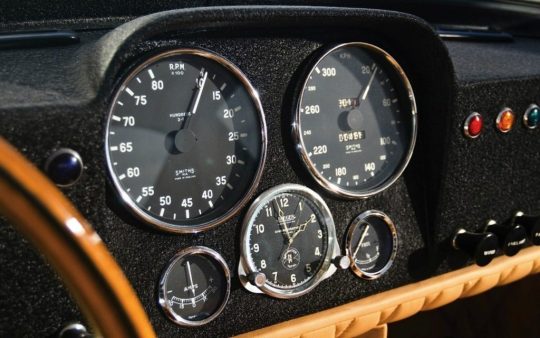

Read the full article
0 notes